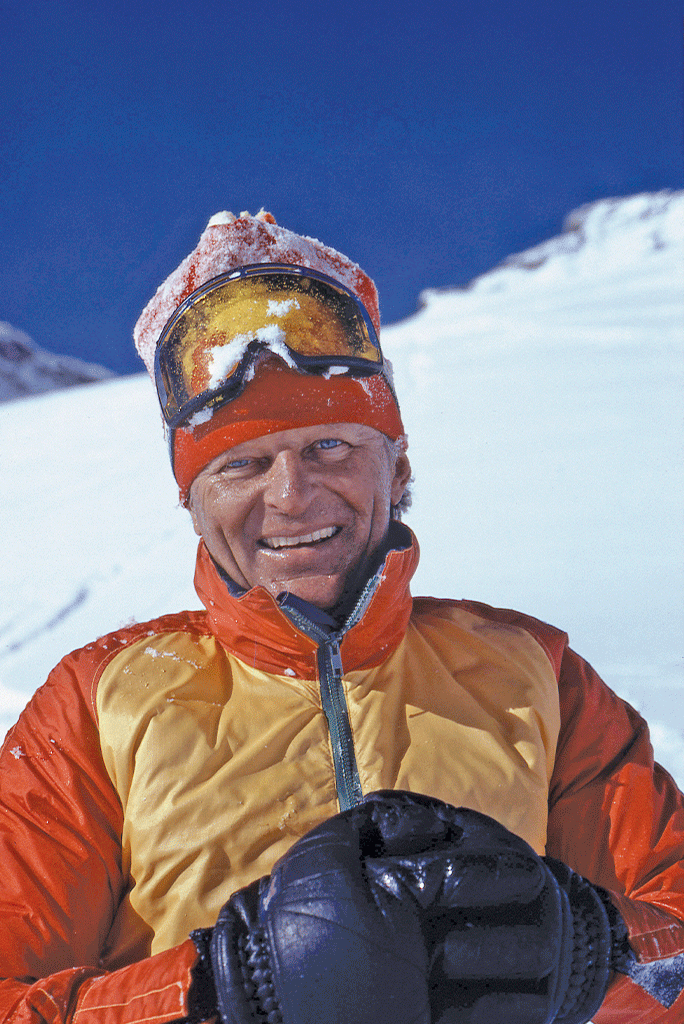In 1964, the owners of Sun Valley Company, Averell Harriman’s Union Pacific Railroad, retained the Janss Corporation to determine what should be done with the struggling resort. The corporation was a successful family real estate development force in Southern California.
Bill Janss, a son of the firm’s founder, had been educated at Stanford and was a skilled skier. He had skied Sun Valley for years and was on the 1940 U.S. Olympic Team (those games were canceled because of war). Janss possessed a winning personality, a broad range of cultural interests and a keen sense of product. As a young man back from serving as a pilot in World War II, he developed innovative and profitable cattle and feedlot operations in the Southwest and in Hawaii. He also invested significantly in the new Aspen ski resort and was participating in that community’s emerging cultural and intellectual endeavors. Bill Janss knew the business of mountains and the joys of skiing them.
The Janss group found Sun Valley a muddle. The railroad had no concept for enhancing the resort or mountain: developing condos, expanding recreational opportunities, instituting cost accounting and controls. When the Janss group declared it would cost Union Pacific $5 million to bring the facility up to competitive standards, the railroad people blanched.
“We won’t do it,” Janss recalled them saying. Then they said something that focused his attention: “If you think [the Sun Valley Resort] is so good, why don’t YOU buy it?”
Janss and his brother, Ed, were stunned. He recalled that it was as if someone had said, “‘Would you like to own Yosemite National Park?’ Can you imagine owning a whole resort? So we said, ‘We want to do it.’”
In 1964, a $3 million deal was reached and Janss became the second owner of Sun Valley. Among the primary goals of the new ownership was dramatically expanding and improving the mountain and making the resort more comfortable and accessible for the rapidly expanding number of middle-class ski enthusiasts.
Unlike other resorts, Sun Valley developed its own land, keeping strict control over the placement and style of development, the only exception being the sale, in 1972, to Johns-Manville Corporation of 1,900 acres on the other side of Dollar Mountain for what eventually became Elkhorn. While Janss was criticized for building condominiums, he was also instrumental in obtaining planning and zoning regulations that protected hillsides in Sun Valley and limited all development to only 15 percent of the land. In his reflections for SKI Magazine in 1995, Janss referred to these protections as “one of my legacies.”
In 1968, Bill Janss purchased Sun Valley from the Janss Corporation and Janss became a very active and involved chairman of the board.
Janss threw off ideas at a remarkable rate. Wally Huffman, for more than a quarter of a century a senior and ultimately the senior executive of Sun Valley, recalls Janss returning from the mountain at midday with a “to-do” list for his staff. Frustrated by carrying a pad of notepaper, Janss would stop skiing and jot notes on his arm with a pen.
“He would come in from the mountain, roll up his sleeve and there on his arm was this list,” Huffman recalls. “We knew that if the list extended to his elbow the s*** was going to hit the fan that day.”
Janss was also intent on adding a cultural dimension to the community. He and his wife, Anne, asked an old friend from Los Angeles, Glenn C. Cooper, who had recently moved to Sun Valley after the death of her husband, to help create cultural outlets that would transform the Valley into a place rich with cultural awareness and experiences.
The Janss years were good for the resort and the Valley. The Sun Valley customer base was broadened. People soon began to see Sun Valley as a rewarding place to live an engaging lifestyle, not just a place to visit. That evolved into a large second-home community that has become a significant economic and cultural asset to the Valley.
Most important, Janss, the skier, the mountain man, the planner, began to dramatically change the mountain. As one Sun Valley veteran said, “Mr. Janss was, for us skiers, a dream man. He gave us more runs, more lifts.”
Janss lived in Sun Valley for years after he sold the resort to the Holding family in 1977 and was warmly regarded by the community. He passed away in 1996 at the age of 78. In some ways, Janss sacrificed himself and a portion of his wealth to Sun Valley. He could have been a dilettante. But he wasn’t. Like Harriman, he loved Sun Valley and all it represented. But he frequently said it was good for Sun Valley that it was now owned by a man [Earl Holding] who could afford it.


